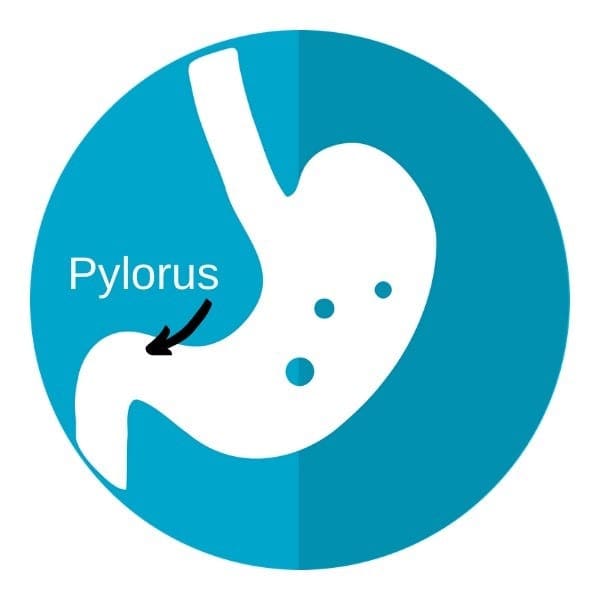
Hypertrophic pyloric stenosis
A short, but important chapter of a not so rare condition in pediatrics, called pyloric stenosis.
I hope this chapter raise awareness of parents in order to diagnose it as early as possible.
What is hypertrophic pyloric stenosis?
Hypertrophic (increase in the volume) pyloric (the distal part of the stomach), stenosis (narrowing), is the condition in which in the short period after birth the pyloric muscle getting abnormally enlarged and blocks the stomach.
How many babies suffer from pyloric stenosis and what are the risk factors?
The average incidence is 1-3/1000 babies.
It happens more in firstborn males and more in the offspring of a mother or father who had pyloric stenosis (there is a 20% risk for the son and 10% for the girl of a mother who had pyloric stenosis). It also happens more in infants with O or B blood groups.
In most of the cases, it is an isolated condition, in the minority it is associated with other, much rarer, congenital defects.
While antibiotic use (maternal use during pregnancy or newborn use after birth) were connected to pyloric stenosis, the true connection between these and pyloric stenosis is unknown.
What is the typical presentation of babies with hypertrophic pyloric stenosis?
The presentation mainly begins in the first weeks of life, typically 3 weeks.
Vomiting, vomiting and more vomiting is the typical presentation. In the beginning once daily, then twice and eventually after most meals. While in the beginning, the vomiting may not be projectile, but after few days, when the blockade of the gastric is almost full, the vomiting will happen very early after almost all meals and maybe forceful and projectile.
Typically, the baby is hungry after vomiting and is able to feed again. Sometimes jaundice accompany this the condition.
Why is it important do diagnose pyloric stenosis as early as possible?
Earlier diagnosis will lead to fewer complications, mostly dehydration and malnutrition of the child.
How the diagnosis of pyloric stenosis can be done?
First of all – awareness and high index of suspicion of the care givers and the pediatrician.
Then physical examination – in our pediatric textbooks it is written that the doctor can palpate the large and firm pyloric muscle. It is imagined as an olive mass in the right side of the abdomen. However, in countries or places when the accessibility to medical care is easy, many pediatricians never felt that mass.
Diagnosis of pyloric stenosis is done today using ultrasound. In most of the cases no other study is needed.
What should we not miss in a vomiting baby?
There are other important medical condition you should diagnose early in a vomiting child, among those:
1. One should know the difference between spitting up to vomiting. Spitting up is frequent in small children and mostly relates to reflux, while projectile vomiting is something else and warrants your pediatrician attention.
2. Not routinely, but cow’s milk sensitivity might also present as vomiting.
3. Vomiting with diarrhea might be the presentation of acute gastroenteritis.
4. Other important conditions such as bowel obstructions (congenital or acquired), metabolic, endocrine and neurologic problems and more.
Remember, there is no place for stress. There is a place for consultation with your pediatrician.
What is the treatment for pyloric stenosis?
At presentation the treatment will be directed to stabilizing the child including correction of his fluid and electrolyte status.
Then the baby will have a small procedure called pyloromyotomy either by open (small skin incision) or closed (laparoscopic technique).
In most of the cases recovery is fast and complete. And this is why we love pediatric medicine!
So, be aware, but don’t be afraid, and in any doubt go to see your trusted pediatrician.
For comments and questions, please register
